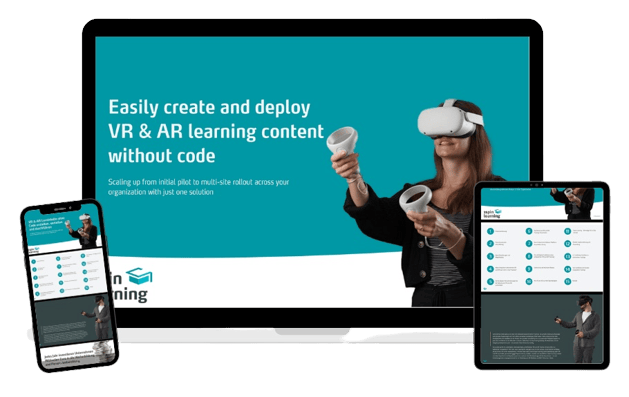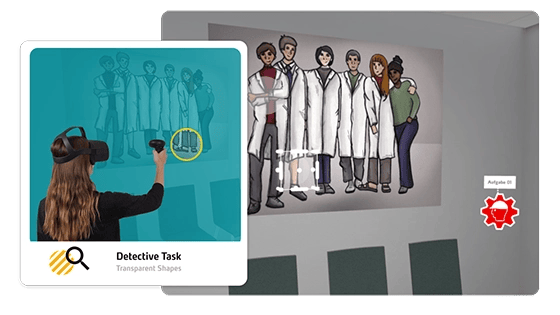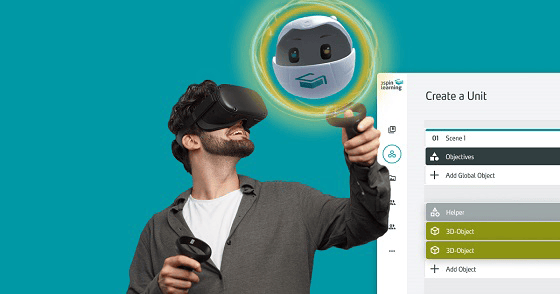LMS Benefits for Using VR & AR Technology
Learn about LMS Benefits and how authoring platforms such as 3spin Learning can help you smoothly integrate Virtual and Augmented Reality into your...
Discover how VR technology is revolutionizing education, creating immersive and engaging learning experiences for students of all ages.
Learn about the benefits, concerns, and tools available to educators in this comprehensive guide to VR education.
Virtual Reality has revolutionized the way we perceive and interact with the world around us. One of the most exciting applications of this technology is in the field of education. VR education has the potential to transform the traditional classroom by creating immersive and engaging learning experiences for students of all ages.
In this article, we will explore everything you need to know about VR education, including the tools and resources available to educators.
VR education is a type of learning that uses Virtual Reality technology to create immersive, interactive, and engaging learning experiences. This technology allows students to explore and interact with subjects in a more meaningful and memorable way than traditional classroom methods.
For example, students can explore ancient civilizations, go on virtual field trips, and experience hands-on science experiments in a safe and controlled environment.
There are many benefits of using VR technology in education. One of the most significant advantages is the ability to create immersive and engaging learning experiences. This can help students stay focused and interested in the subject matter, leading to better retention of information.
Another benefit of VR education is the ability to provide hands-on learning experiences in a safe and controlled environment. For example, students can conduct virtual science experiments without the risk of injury or damage to equipment. This can also help students who may not have access to certain resources, such as a laboratory, to gain valuable experience and knowledge.
However, there are also some concerns associated with the use of VR technology in education. One of the main concerns is the cost of implementing this technology. VR equipment and software can be expensive, which may limit its accessibility to some schools and students.
Another concern is the potential for students to become disoriented or experience motion sickness while using VR technology. This can be mitigated by ensuring that students take regular breaks and that the content is designed with motion sickness in mind.

There are many examples of VR education being used in virtual classrooms around the world:
VR technology allows students to take virtual field trips to locations they may not otherwise be able to visit. For example, students can explore ancient civilizations, go on a safari, or visit outer space. These virtual field trips can enhance learning and provide a more immersive and engaging experience.
VR technology can provide a safe and controlled environment for students to conduct science experiments and explore engineering concepts. For example, students can build and test virtual structures or explore the human body in a 360-degree immersive environment.
VR technology can be used to provide an immersive and interactive experience for students studying art and design. For example, students can create and manipulate 3D models, or explore and interact with famous works of art from around the world.
VR technology can be used to provide an immersive language learning experience. For example, students can practice speaking and listening in a virtual environment that mimics real-world situations, such as ordering food in a restaurant or asking for directions on the street.
VR technology can be used to develop soft skills such as teamwork, communication, and problem-solving. For example, students can participate in virtual team-building exercises or simulations that require them to work together to solve a problem or complete a task.
VR Care supports nursing staff in making their work more effective. Here you will find a recent interview about this: Driving Progress with Digitization And VR In Medicine
These are just a few examples of how VR technology can be used in education. As the technology continues to evolve, the possibilities for immersive and engaging learning experiences are virtually limitless.

When it comes to selecting VR software for education, there are several factors to consider..
Since Virtual Reality has the potential to transform traditional classroom teaching by creating a virtual environment for students to explore and interact with, it can enhance the understanding and retention of subject matter, particularly in STEM fields. Students can conduct experiments, explore different scenarios, and interact with 3D models in a safe and controlled environment, leading to a deeper and more meaningful understanding of the material.
At the forefront of VR education is 3spin Learning, the comprehensive VR education solution, including hardware, software, and content development. Our VR technology can be used in a variety of subjects, allowing for real-time collaboration, giving students the opportunity to work together on projects and experiments.
In addition, 3spin Learning provides support and training to educators to ensure that they can effectively implement VR technology. Our team of experts can also assist with the creation of customized VR content to align with specific curriculum requirements. With 3spin Learning's VR education solution, educators can enhance the learning experience for their students and prepare them for the future of education.
VR training sessions have the potential to transform the way we teach and learn in the classroom. By creating immersive and engaging learning experiences, students can gain a deeper understanding of subjects and retain information more effectively.
While there are some concerns associated with the use of VR technology in education, the benefits far outweigh the risks. With the right software and resources, educators can use VR technology to create exciting and memorable learning experiences for students of all ages.

Learn about LMS Benefits and how authoring platforms such as 3spin Learning can help you smoothly integrate Virtual and Augmented Reality into your...
Experience the best of both worlds: Enhance Your LMS with Virtual Reality for immersive, interactive learning.
Improve your students' online learning experiences with our guide to choosing the right virtual classroom software.
Stay up to date on new insights in VR / AR learning with AI and build or improve your knowledge within the technology.